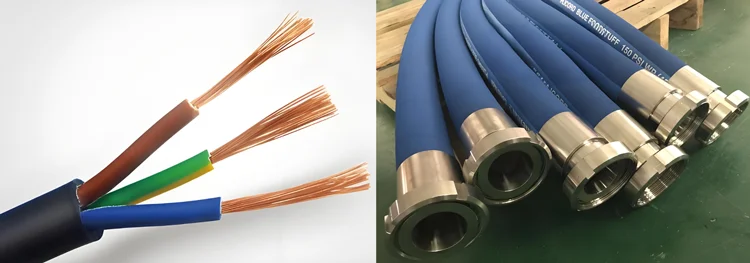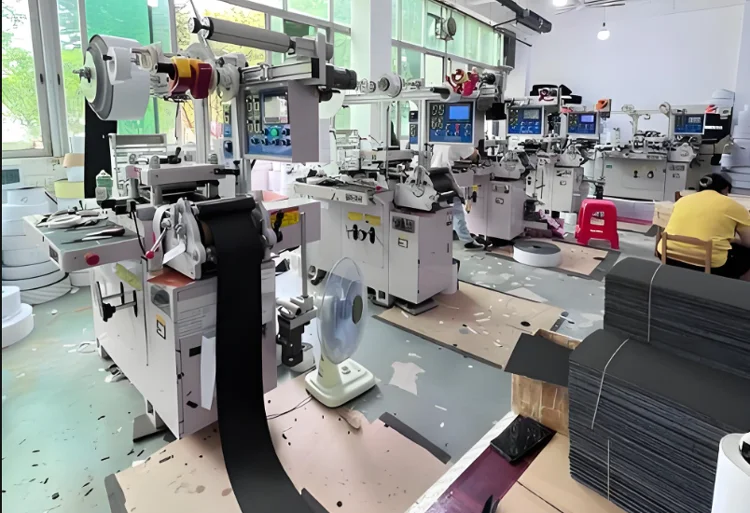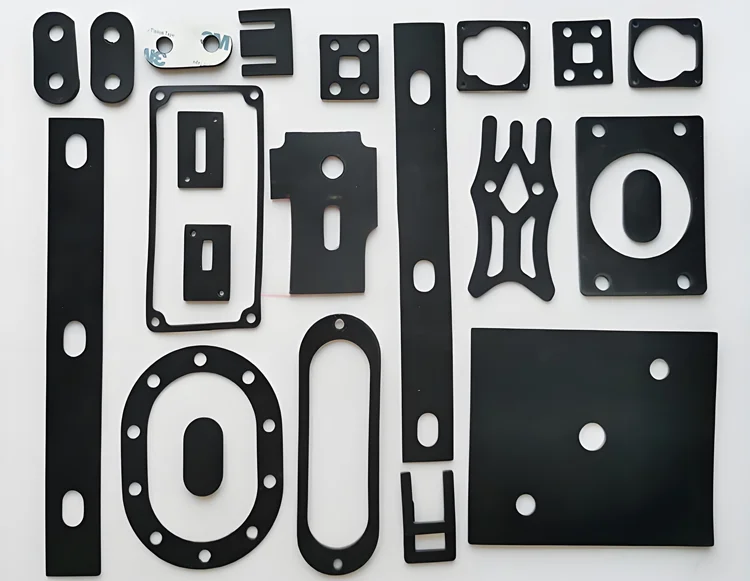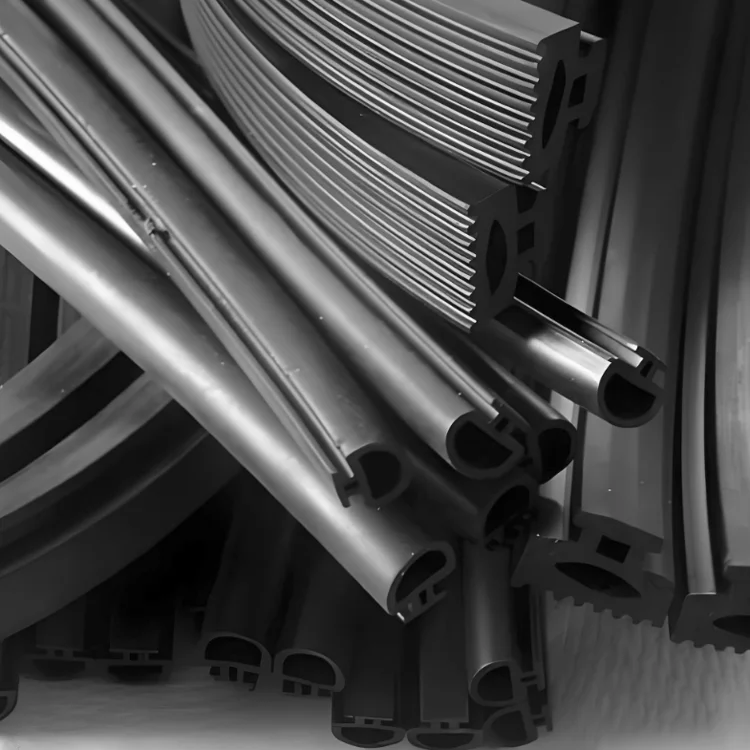Introduction: Why EPDM Is Invaluable in Modern Industry
In today’s ever-evolving industrial landscape, material performance is everything. Among the many elastomers available, one stands out for its unique versatility across temperature extremes, electrical insulation, weather resistance, and cost-effectiveness—EPDM rubber.
In 2024, the global EPDM (Ethylene Propylene Diene Monomer) rubber market is valued at approximately USD 5 billion, with a projected compound annual growth rate (CAGR) of 4.7%. That growth is driven by its pivotal role across multiple industries: the automotive sector alone consumes nearly 40% of global EPDM, while construction waterproofing, cable insulation, and HVAC sealing each account for around 10–15%.
So why should you care about EPDM?
Unlike natural rubber or alternatives like silicone rubber and neoprene (CR), EPDM excels where others fall short. It offers superior resistance to ozone, UV, and weathering—making it a top choice for outdoor sealing applications. It also performs reliably in temperatures ranging from -50°C to +150°C and provides high dielectric strength, making it ideal for electrical and high-temperature systems.
Whether you’re sourcing for auto components, waterproofing membranes, or insulation materials, EPDM’s combination of durability, adaptability, and affordability makes it hard to ignore.
Here’s what this guide offers: a deep dive into EPDM’s chemical structure, technical advantages, cross-industry applications, manufacturing challenges, and the latest innovations shaping its future.
Let’s start by breaking down the science behind its unique performance profile.

EPDM’s Chemical Structure and Core Properties
1. Chemical Structure Explained
At the heart of EPDM’s remarkable performance lies its unique chemical makeup. EPDM is a terpolymer composed of ethylene, propylene, and a diene monomer—typically ENB (Ethylidene Norbornene) or DCPD (Dicyclopentadiene). This molecular design imparts several advantages:
- Saturated Backbone: Unlike natural rubber or SBR (styrene-butadiene rubber), EPDM features a saturated hydrocarbon backbone, making it highly resistant to ozone, UV radiation, and oxidation. This is why EPDM doesn’t crack or degrade even after prolonged outdoor exposure.
- Diene Component (ENB or DCPD): The diene monomer introduces crosslinking sites that enable vulcanization. ENB, in particular, offers faster vulcanization speed and better processability, which is why most high-performance EPDM grades today are ENB-based. The higher the ENB content (typically 4.5%–9%), the faster the curing process.
“It’s the saturated molecular backbone that gives EPDM unmatched longevity in extreme weather environments.”
2. Key Performance Metrics
When evaluating EPDM for engineering or procurement decisions, understanding its material specifications is crucial. Here are its core mechanical and thermal properties:
| Property | Typical Range |
|---|---|
| Operating Temperature | -50°C to +150°C |
| Density | ~0.87 g/cm³ |
| Volume Resistivity | >10¹⁵ Ω·cm |
| Tensile Strength | 7–25 MPa |
| Elongation at Break | 300–600% |
These parameters highlight EPDM’s resilience across mechanical, thermal, and electrical stress.
It’s particularly effective for applications requiring flexibility in sub-zero environments or prolonged thermal resistance in engine compartments or rooftops.
3. EPDM vs Other Rubbers (Comparison Table)
To aid your selection process, here’s how EPDM stacks up against other commonly used rubbers:
| Property | EPDM | NBR (Nitrile) | CR (Neoprene) | FKM (Viton) |
|---|---|---|---|---|
| Ozone Resistance | Excellent | Poor | Moderate | Excellent |
| Heat Resistance | Very Good (-50~150°C) | Good (-30~120°C) | Good (-40~120°C) | Excellent (-20~250°C) |
| Oil Resistance | Poor | Excellent | Moderate | Excellent |
| Flame Resistance | Moderate | Poor | Good | Very Good |
| Cost | Low | Medium | Medium | High |
EPDM offers the best performance-to-cost ratio for weather and temperature resistance but is not suitable for oil-based environments without modification.
Next, I’ll explore how EPDM is being used in real-world industries with practical examples and application scenarios.

Key Industry Applications and Real-World Case Studies
EPDM’s durability, flexibility, and resistance to heat and environmental stressors make it a cornerstone material across a wide array of industries. Below are the sectors where EPDM plays a critical role—with real-world usage cases to illustrate its value.
1. Automotive Industry
The automotive sector accounts for nearly 40% of global EPDM consumption, and for good reason. Its sealing performance, aging resistance, and temperature tolerance make it ideal for high-demand vehicle applications.
- Door & Window Seals: EPDM weatherstrips maintain elasticity for over 10 years, even in harsh sunlight and temperature cycles. Their resistance to ozone cracking ensures cabin integrity and noise isolation.
- Coolant Hoses: EPDM hoses used in engine cooling systems handle hot glycol-based coolants without becoming brittle, reducing the risk of leaks or burst lines.
- Case Example: A European EV manufacturer selected ENB-based EPDM profiles for its battery compartment gaskets due to their combination of sealing flexibility and resistance to lithium battery heat byproducts.
2. Construction & Roofing
In building and infrastructure, EPDM is widely used for waterproofing and sealing, particularly in roofing and expansion joints.
- Roof Membranes: EPDM sheets are a standard material in low-slope commercial roofing systems. They meet ASTM D4637 standards and provide up to 30 years of performance with minimal maintenance.
- Curtain Wall Gaskets & Expansion Joints: EPDM seals absorb thermal expansion and resist weather damage, ensuring façade and structural longevity.
- Case Example: The roofing of a large international airport terminal adopted 1.5 mm EPDM membranes to endure wind, UV, and seasonal temperature fluctuations—delivering superior leak prevention with a 20-year warranty.

3. Electrical & Electronics
Due to its excellent dielectric strength and resistance to corona discharge, EPDM is a preferred insulation material for power systems.
- Cable Jacketing: Used as insulation in high-voltage and medium-voltage cables.
- Insulating Sleeves & Grommets: Prevent arcing and moisture ingress in control panels and transformers.
- Case Example: A Chinese electric utility deployed EPDM-jacketed cables in an outdoor substation project to combat humidity and ozone exposure without compromising conductivity insulation.
4. Emerging Fields
EPDM’s versatility continues to find new ground in modern energy and environmental systems.
- Photovoltaic (PV) Modules: EPDM seals used in solar panel frames meet PID (Potential Induced Degradation) testing standards, ensuring performance over decades of UV exposure.
- Battery Pack Gasketing: In electric vehicles, EPDM profiles are applied in BMS (Battery Management System) casings to prevent moisture ingress and resist thermal cycling.
- Case Example: A battery pack OEM incorporated flame-retardant EPDM foam in its waterproof enclosures to meet IP68 ingress protection and flame resistance.
“From sealing car doors to insulating solar panels, EPDM’s performance is not just versatile—it’s strategic for reliability in every application.”
Next, I’ll uncover the challenges faced during EPDM processing and how they can be overcome through material engineering and process optimization.

Manufacturing Challenges and Engineering Solutions
While EPDM is a high-performing elastomer, it presents certain production and application challenges. Fortunately, with proper material selection and processing techniques, these issues can be mitigated or even turned into performance advantages.
1. Processing Challenges
Vulcanization Speed – Too Slow?
Traditional sulfur-curing systems for EPDM often require longer cure times due to the polymer’s saturated backbone. This can bottleneck production efficiency.
- Solution: Switch to a peroxide curing system. It enables faster and cleaner vulcanization, especially suitable for high-temperature or high-performance applications like cable insulation and automotive hoses.
- Advanced Approach: Incorporate co-curing agents (e.g., TMPTMA) to improve crosslink density and speed.
Bonding Difficulty
EPDM’s low surface energy makes it difficult to bond with metals, plastics, or coatings—posing challenges in multi-material assemblies.
- Solution: Use plasma surface treatment or chemical primers (such as silane-based adhesion promoters) to significantly increase bond strength.
- Real-World Tip: In automotive gasket production, we’ve seen success using solvent-based primers in a two-step spray + heat cure method.
“EPDM’s bonding can be weak—but with the right surface pre-treatment, its adhesion rivals that of high-performance polymers.”
2. Material Limitations
Poor Oil Resistance
EPDM naturally lacks compatibility with oils, fuels, and hydrocarbon solvents—limiting its use in fuel systems.
- Solution: Blend with NBR (Nitrile Rubber) in formulations such as 70/30 EPDM/NBR to improve oil resistance without sacrificing flexibility.
- Use Case: This blend is commonly used in under-the-hood sealing strips in diesel engines.
Moderate Dynamic Performance
For highly dynamic applications involving flexing or vibration, EPDM may not provide the best fatigue life.
- Solution: Incorporate toughening agents such as thermoplastic elastomers (TPEs) or use hybrid systems (e.g., EPDM-PP compounds) to improve elasticity under strain.
3. Cost Optimization Strategies
Balancing Cost with Performance
EPDM is already cost-effective, but further savings are often pursued through smart filler systems.
| Filler Type | Cost Impact | Performance Tradeoff |
|---|---|---|
| Calcium Carbonate | Low cost | Decreased elasticity and tensile strength |
| Carbon Black (N550/N660) | Moderate cost | Improved mechanical properties and UV resistance |
| Silica or Nano-Clay | Higher cost | Improved barrier properties and aging resistance |
- Best Practice: Combine carbon black + minimal calcium carbonate to optimize both mechanical strength and processing economy.
“Smart filler design is key—EPDM compounders can reduce costs by 15–20% without a significant drop in performance.”
Future Trends and Technology Innovations in EPDM
As industries push toward sustainability, durability, and smart functionality, EPDM rubber is evolving beyond traditional formulations. Here’s how new technologies and market demands are reshaping the future of EPDM materials.
1. Environmental Compliance and Halogen-Free Formulations
EPDM manufacturers are increasingly required to meet stringent environmental regulations such as RoHS, REACH, and UL94-V0 for flame retardancy—especially in transportation and consumer electronics.
- Halogen-Free Flame-Retardant EPDM: By incorporating safe additives like magnesium hydroxide (MDH) or aluminum trihydrate (ATH), EPDM can now be formulated to pass vertical flame tests without using halogens.
- Applications:
- Rail transit cable sheathing
- Home appliance insulation
- Low-smoke, non-toxic building materials
“Eco-friendly EPDM is no longer niche—it’s becoming the new baseline for compliance-driven industries.”
2. Reinforced High-Performance EPDM
Traditional EPDM is strong, but for more demanding environments—like high-pressure seals or automotive turbo hoses—performance must be pushed further.
- Nano-Reinforced EPDM: The addition of nano clay, graphene, or carbon nanotubes increases tensile strength, abrasion resistance, and gas impermeability by over 20%.
- Experimental Success: A study showed that 5 phr of nano clay in peroxide-cured EPDM improved tensile strength from 11 MPa to 14 MPa and gas permeability was reduced by 35%.
- Key Targets:
- High-temperature exhaust system gaskets
- Solar panel junction box sealing
- EV battery enclosures
3. Smart and Self-Healing Materials
Innovation is moving EPDM from passive sealing to active functionality—introducing self-healing and responsive properties that enhance lifecycle and reduce maintenance costs.
- Self-Healing EPDM:
- Microencapsulated healing agents that release upon crack formation
- Reversible Diels–Alder bonding systems triggered by heat (~120°C)
- Status: Currently in R&D or pilot scale, expected commercial readiness within 5–10 years.
- Application Potential:
- Long-life infrastructure gaskets (bridges, tunnels)
- Remote solar installations
- Automotive underbody panels
“Tomorrow’s EPDM won’t just resist damage—it will recover from it.”

Summary and FAQs: What Every Buyer Should Know
As we conclude this in-depth guide, let’s reinforce the core insights and provide quick answers to common procurement questions about EPDM.
1. Frequently Asked Questions (FAQs)
Q: Can EPDM be used in fuel hose applications?
A: Not in its pure form. EPDM has poor oil and fuel resistance. For fuel-related applications, it must be blended with NBR or chemically modified to improve hydrocarbon resistance.
Q: How much ENB content is optimal for EPDM?
A: Typical ENB content ranges between 4.5%–9%. Higher ENB content accelerates vulcanization, making it ideal for fast-cure, high-throughput production scenarios such as automotive extrusion lines.
Q: Can EPDM replace silicone rubber in medical sealing applications?
A: No. While EPDM is highly weather-resistant, it lacks the biocompatibility and purity of medical-grade silicone. It is not recommended for applications requiring direct human contact or sterilization.
Q: What certifications should EPDM materials have for international use?
A: Depending on the application:
- ASTM D2000 for automotive parts
- UL94 / RoHS / REACH for electrical and flame-retardant use
- ISO 4633 / EN 681-1 for potable water and pipeline sealing
Q: Is recycled EPDM suitable for performance parts?
A: Only for non-critical applications. Recycled EPDM is acceptable for anti-vibration mats, underlays, or fillers—but not for sealing, insulation, or structural components that require mechanical precision.
2. Final Takeaways
- EPDM’s edge lies in its outstanding weather resistance, thermal stability, and electrical insulation, making it indispensable across the automotive, construction, and power industries.
- Weaknesses like poor oil resistance or low adhesion can be mitigated through blending, surface treatment, and smart formulation strategies.
- The future of EPDM is green, high-performance, and smart—with halogen-free formulations, nano-reinforcements, and self-healing technologies leading the next wave of innovation.
“Choosing the right EPDM compound isn’t just about specs—it’s about matching performance with purpose, application, and long-term value.”
Still unsure which EPDM compound fits your project?
Let me help. Whether you need extrusion-grade profiles, flame-retardant insulation, or high-elongation gaskets, I can provide tailored guidance based on your performance and certification requirements.
Get in touch or explore our EPDM product range at www.kinsoe.com.
Let’s seal success—together.
References:

